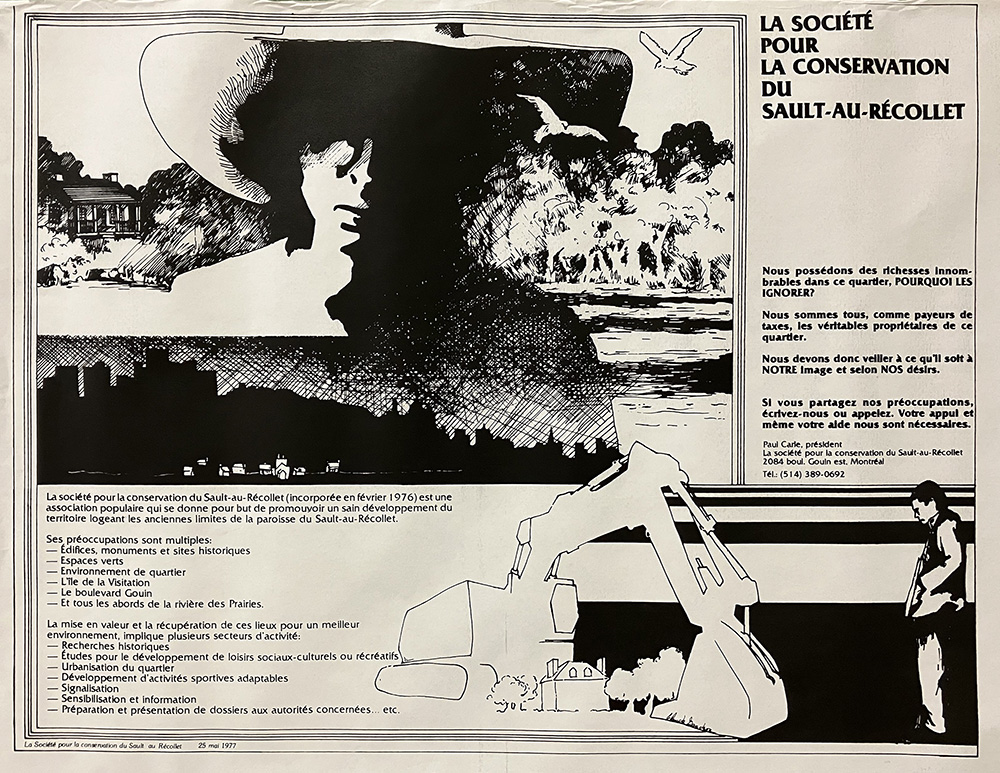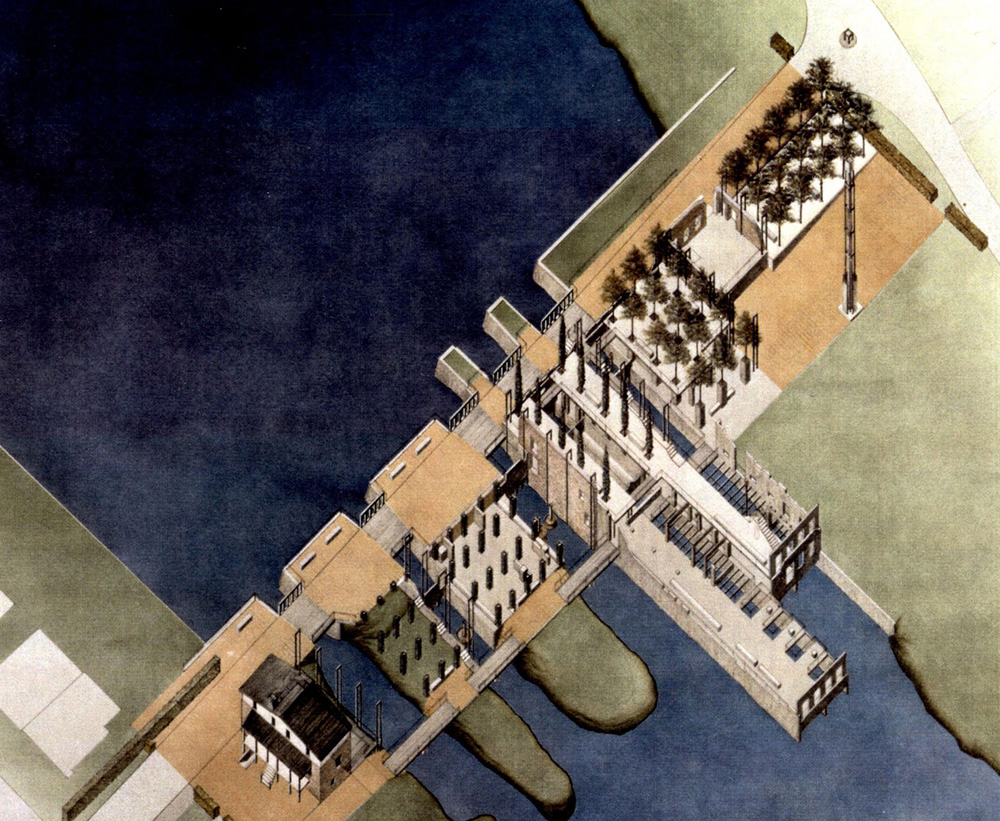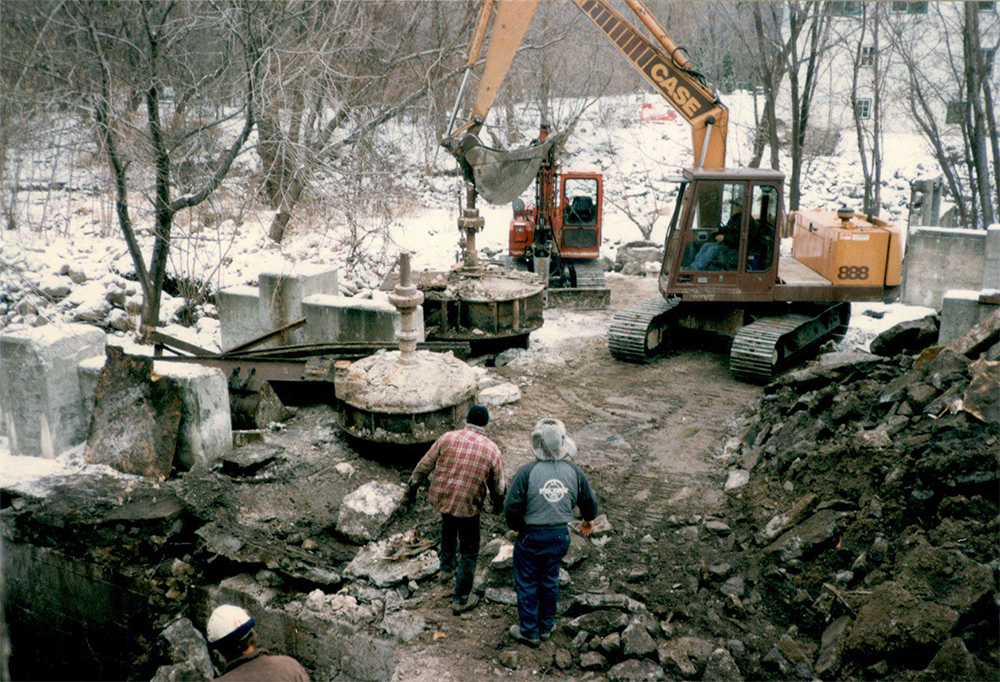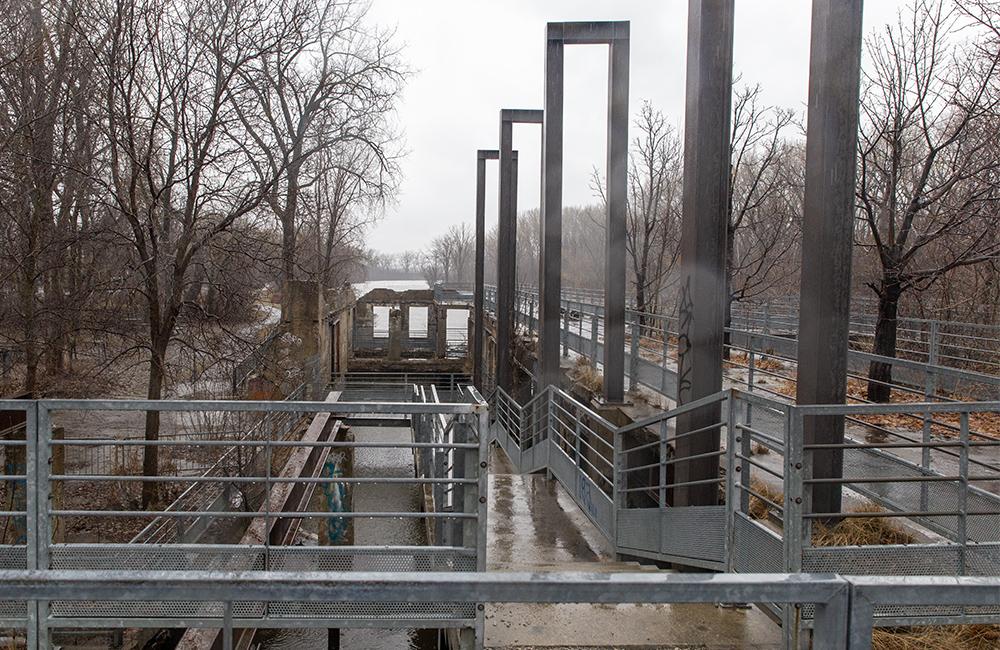A site to cherish for generations to come
Petra, a Swedish botanist, arrives at Sault-au-Récollet in September 1979.
She is staying with Paul Carle. He lives in the former residence of Pascal Persillier, son, and oversees its restoration. Petra notes that the recent construction of the Papineau-Leblanc Bridge has isolated the church from the heart of the village. Paul explains to her that this division made him aware of the fragility of the historical and natural heritage of the village.
With other citizens, he created the Société pour la conservation du Sault-au-Récollet. Following their efforts, and those of other groups, the idea of making Île de la Visitation a nature park spread. Petra explains to Paul that Pehr Kalm would be happy to see this wonderful project come to fruition.

Poster published in 1977 detailing the multiple concerns of the Sault-au-Récollet conservation society.
The site was acquired by the Montreal Urban Community (MUC) in 1982, and the park established in 1984. The cider press house is restored.
A little over a decade later, the MUC commissioned archaeologists, historians and architects to plan the rehabilitation of the dike, as well as the vestiges of its mills and factories.

Axonometric view (also known as parallel projection) of the development concept for the mills site envisioned by Le Groupe Lestage Inc. Aménagement et design urbain, and Gauthier-Guité-Roy architectes for the Montreal Urban Community.
In our video, Gérald Morel summarizes the concept that guided these professionals. Their vision was to create a journey through the remains of the structures and mechanisms that transformed the power of water into hydraulic energy. A path leads to a belvedere from which the power of water may be contemplated. The specialists’ project highlights the channels and turbines of the dike, the foundations, the load-bearing walls, the floors and the large factory chimney.
Their goal is to reveal the entanglement, unusual in Quebec, of the successive transformations of uses and technologies over three centuries of history.
Mr. Morel is sorry to see that the mills site did not receive rigorous enough maintenance to ensure its preservation but he does not lose hope that it can regain its good looks if the necessary work is carried out soon.
Gérald Morel explains to Stéphane Tessier his vision about what elements of the mills site need to be preserved
Video with transcript (EN). Subtitles available in English and French.



